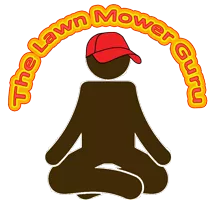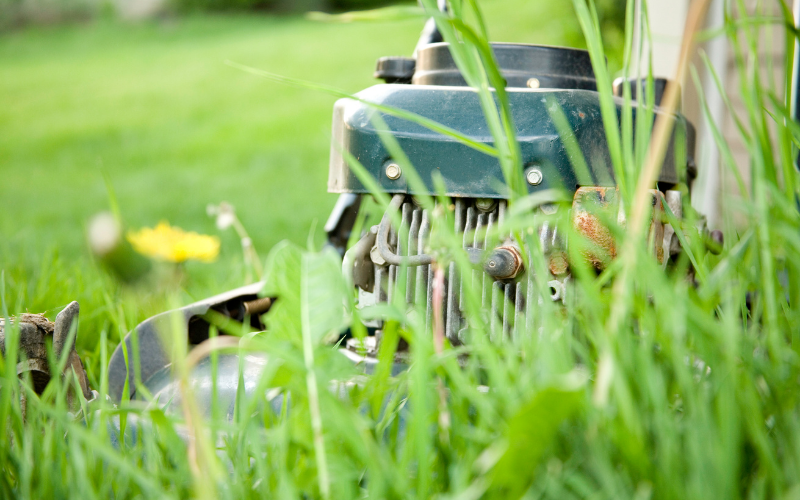Does it seem like you’re mowing your lawn every week? Even more than once a week while your neighbors seem to be taking it easy? In most parts of the country and with nearly any type of grass, this much growth is avoidable. Grass grows quickly for a variety of reasons and there are several ways to counter them effectively, with or without resorting to chemical solutions or tactics that will harm your lawn.
Why Does My Grass Grow So Fast?
Grass grows faster when it’s mown too short or too often, when it’s over-watered, when it has access to more nutrients than it knows what to do with, and during certain seasons, times of the year, or times of the day. Even more, how quickly your grass will grow under any of these circumstances is directly tied to what type of grass you have.
Top 4 Reasons for Fast Lawn Grass Growth
Below are the top 4 answers to “Why does my grass grow so fast?” This may be just the “why” but the solutions to all of these causes are found in the following section.
Ideal Conditions (for the Grass)
While it may seem strange that ideal conditions could be to blame for any problem, grass that’s too comfortable does tend to grow more than grass that has to deal with one or two insufficiencies. This could be a slightly higher or lower pH, a competing grass type, or water regulation.
Further, you may be providing your grass with what it ‘wants’ but far more than what it needs. For example, withholding fertilizer and only mulching it with grass clippings and leaves will slow down its growth without causing any true deficiencies.
Excess Water
Too much water will quickly turn into too much grass growth and even more work for you, the lawn owner. After a heavy rain, for example, the grass will absorb as much water as it can and use this to grow rapidly. As a plant, grass wants to grow and spread. A sudden rain gives it many of the materials to do this. However, regular watering can also spur grass growth, even if it’s only a little at a time.
Grass That’s Mown Too Short
As mentioned above, grass is a plant that wants to grow and spread. It is genetically programmed to do everything it can to survive. If it is mown too short and too often, but not short enough to cause harm, it may grow faster in response.
The Species of Grass
The type of grass you have will play the biggest part in how fast it grows, just above the amount of water it’s getting. Different types of grass do better in certain areas. Sometimes this is a great thing and sometimes it’s inconvenient. Sure, you love having a healthy-looking lawn but you wish it was a little easier to walk in sometimes.
It’s also a little difficult to replace a lawn; doing so is often a last resort. Still, some varieties are stocked by seed companies specifically to provide homeowners with a low-maintenance lawn. Some grasses even top out at just 3 to 4 inches and may not need to be mown more than 3 to 4 times a year. To find the right strain for your region, however, you should consult with a local seed salesperson or team.
How to Stop Grass from Growing Fast
Now that you know why grass might be growing so fast, there are quite a few things you can do to slow things down. Below are 6 effective ways, from most to least costly, that can help you get ahead of your lawn’s growth.
Change Up Your Watering Schedule
This is how to slow lawn growth if you’re in a dry climate or anywhere you can control how much water your lawn gets. If you master this technique, your lawn should look as lush and healthy as it ever has without growing faster than you can handle.
All you need to do is have a variable, deep watering schedule compared to the light, everyday schedule most often prescribed for lawn grass growth. This means watering your lawn evenly for 30 to 40 minutes every 7, 10, or 15 days depending on the weather, and adjusting that number up or down a few days before repeating the cycle. This is a more natural watering pattern that will keep your grass from growing accustomed to a daily “meal” of water and encourage it to slow down between watering times.
Reduce Added Nutrients
If you can’t control the water added, you should still be able to control the nutrients and fertilizer added to your lawn. In many regions, grass clippings and mulched-up leaves should be sufficient for most of the year, with only a single feeding done in late spring or summer. More than this and you may be feeding your lawn just enough to make it grow more than it needs to.
Let the Grass Grow Longer
As counter-intuitive as this may sound, the less you mow your grass, the slower it will grow. The longer grass is, the less pressure the plant feels to add more “leaves” or blades of grass.
It’s important to remember that the grass wants more surface area with which to capture sunlight and create food. It does this by creating longer blades of grass. If the grass is already 3 inches long or so, many species of grass, especially species with broad blades, will grow more slowly than they would if the grass was cut down to 1 or 2 inches.
In short, the longer the grass is, the slower it will grow. Some varieties and strains of grass also top out at 3 to 4 inches, meaning you may only need to mow them once or twice in a season, just to keep things even or prepare the grass for the winter.
Add Some Shade
Shade is often discouraged as most grass species tolerate it poorly. However, many types of trees can provide just enough shade to keep your grass growth in check without harming them. To find the right kind of trees, you want to stay away from shade trees and look for ornamental trees that grow quickly, have wide-spaced branches, or trees that have small leaves.
Good examples of these types of trees include the Eastern Redbud, Serviceberry, Lilac Trees, Red and Kousa Dogwoods, ornamental pear trees, and many varieties of crabapple. This isn’t the fastest-acting plan as it can take 2 years to start being effective. However, adding a tree to your yard can be rewarding in more ways.
Spray Your Lawn with a PGR (Plant Growth Inhibitor)
This is how to slow lawn growth if you are fine with commercial chemical sprays. Lawn sprays that include PGRs slow plant growth on the chemical level by using synthetic hormones or substances that modify how a plant grows or how often a plant will grow. These substances are widely available in most US states, though many are banned in New York, California, and Canada due to potential misuse and health hazards to humans and animals.
Class A (or I) – Class A PGRs, aka Class I PGRs, are made up of chemicals that are absorbed by the leaves of a plant (or the blades and stems of grass). The cells of these plants are prevented from reproducing themselves effectively. While the growth of the leaves is stunted, the roots, rhizomes, and tillers continue to grow just as well if not better than they did before application.
Class A PGRs also encourage grass to absorb less water and need less light to thrive before it dies back. Class A PGRs do not affect seed germination or seedling growth if the product is applied before the lawn is seeded.
Class B (or II) – Class B PGRs can limit root growth and may even cause certain grass species, such as Poa annua to die back or die off. Class B PGRs should not be used on turfgrass as it also reduces their ability to heal or hold up to traffic.
While PGRs may sound like the perfect solution to your grass-growth problem, they do come with significant downsides. No slow grow grass spray that contains a PGR is environmentally safe or safe for use on any lawn where the grass might be ingested accidentally. It is also never safe to use around home gardens.
PGRs of both classes are toxic chemicals. This means that people and animals that come into contact with them, including contact with any grass or plant life that has been sprayed with them, can have adverse health effects. PGRs in Class A and Class B are known to be likely carcinogens, reduce fertility in humans and animals, and cause organ damage if consumed by animals.
Replace Your Lawn
If you’ve just relocated and are now faced with a lawn that requires mowing every few days with little to no input, you’re likely asking, “Why does grass grow fast? Isn’t it supposed to grow slowly?” The former homeowner likely planted something that seemed good on the packet but turned out like what you’re facing now.
Replacing your lawn is likely the absolute last resort. If you are fed up with how quickly your grass is growing and you need a way to slow it down, planting a new lawn will do that for several years as your new lawn grows in and establishes itself.
If you choose the right variety and strain for your region, you could even be looking at only needing to mow your lawn quarterly. Employing any of the above strategies in addition to selecting a slow-growing grass can help to ensure this outcome.
The Consequences of Slowing Down Grass Growth
How or if slowing down the growth of your grass will have any negative consequences depends on what tactics were used to reach that outcome. For example, limiting water or nutrients as described above should have no noticeable negative outcomes but eliminating the use of water or fertilizer on your lawn altogether and bagging all lawn clippings and leaves could lead to brown patches, a hydrophobic lawn, compaction, or even bare spots as your lawn dies back.
Moderation is key if you want to slow the growth of your grass but keep it looking healthy. Small changes can have a big impact on your lawn. Try each technique alone before adding another to your lawn care regimen.




Leave a Reply